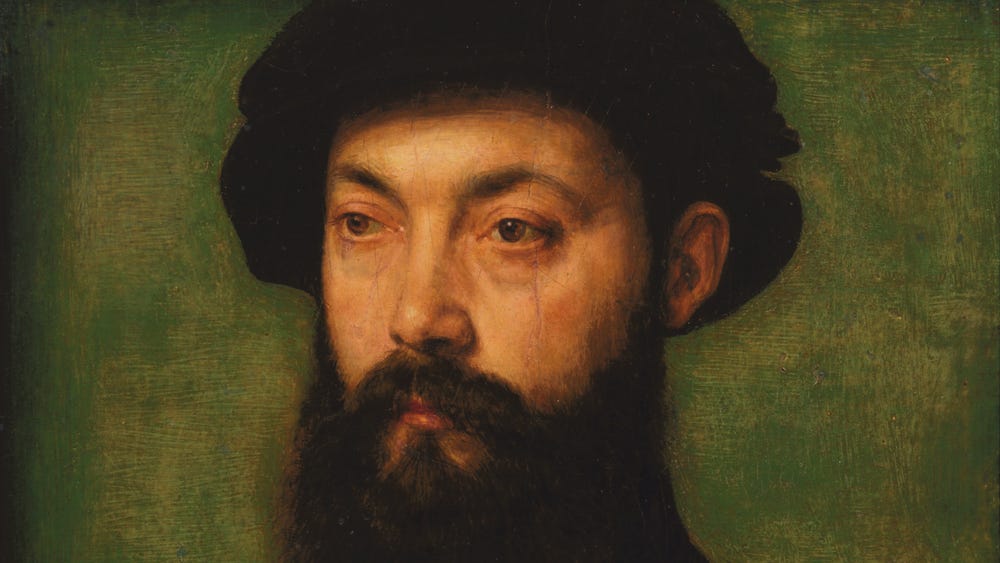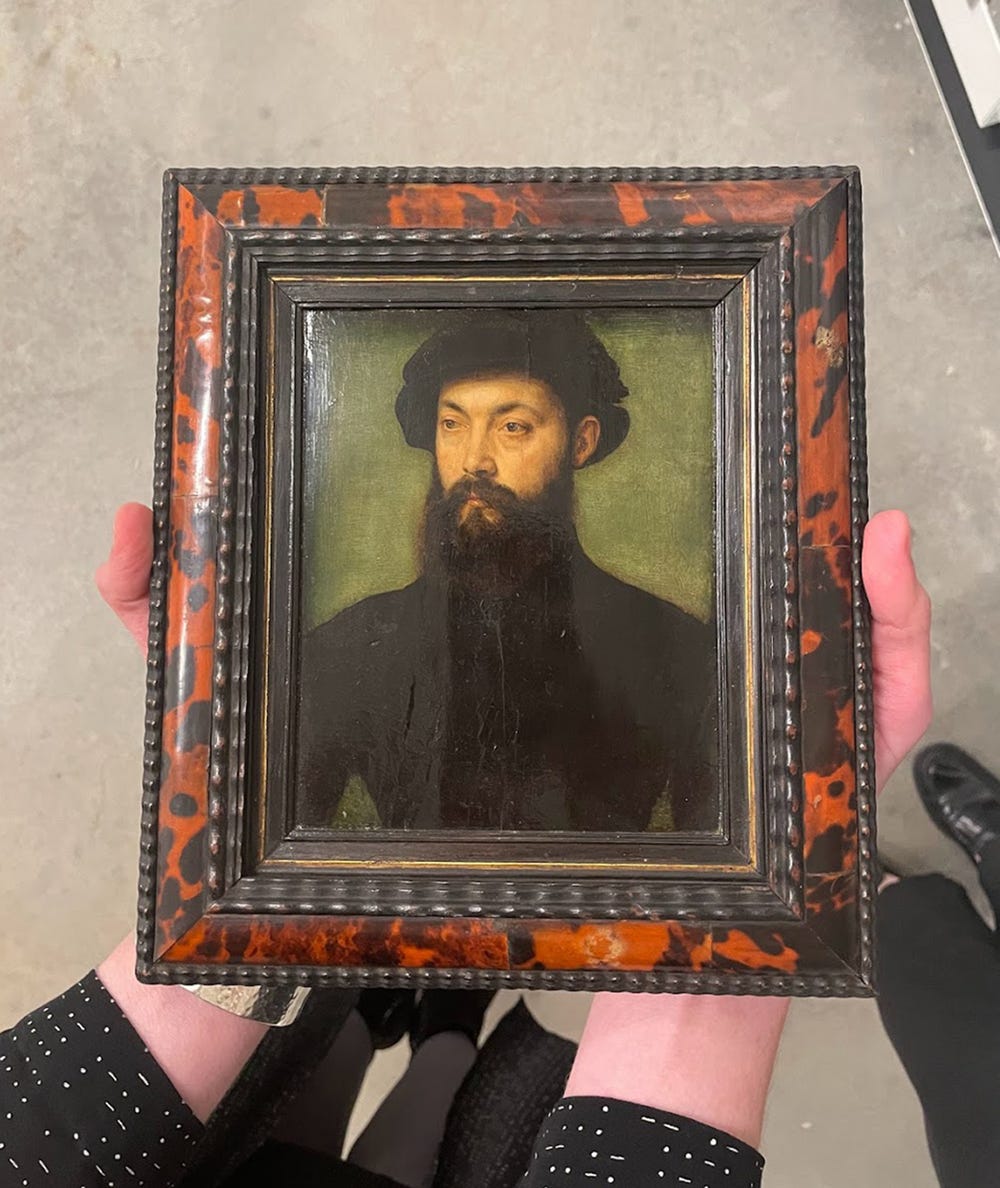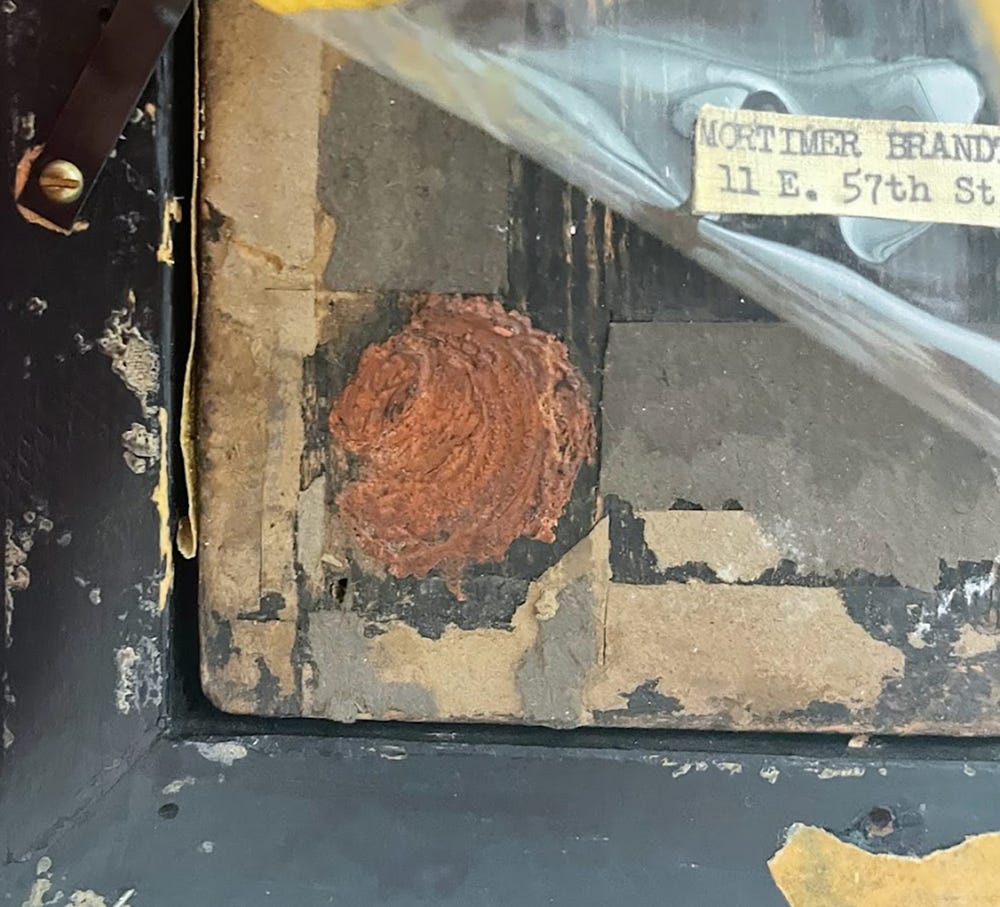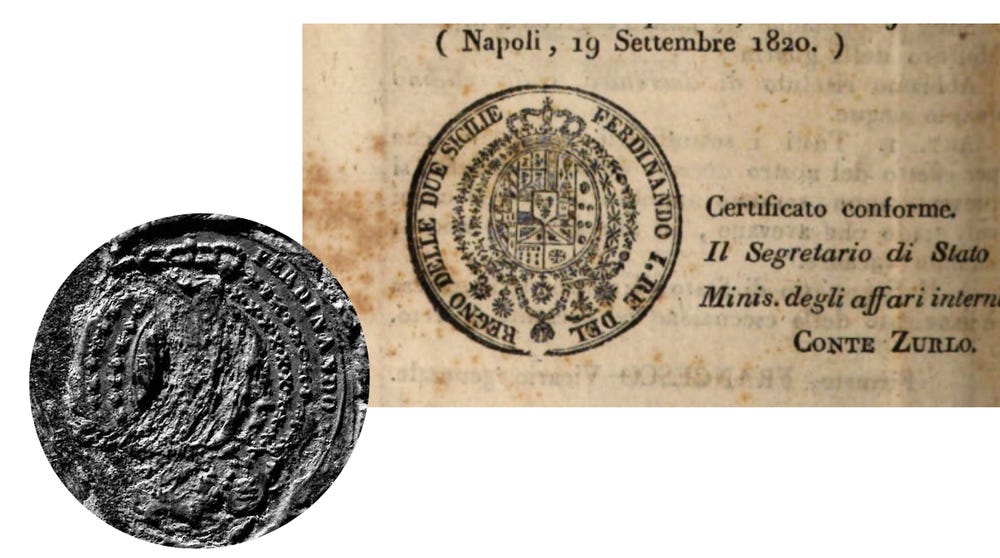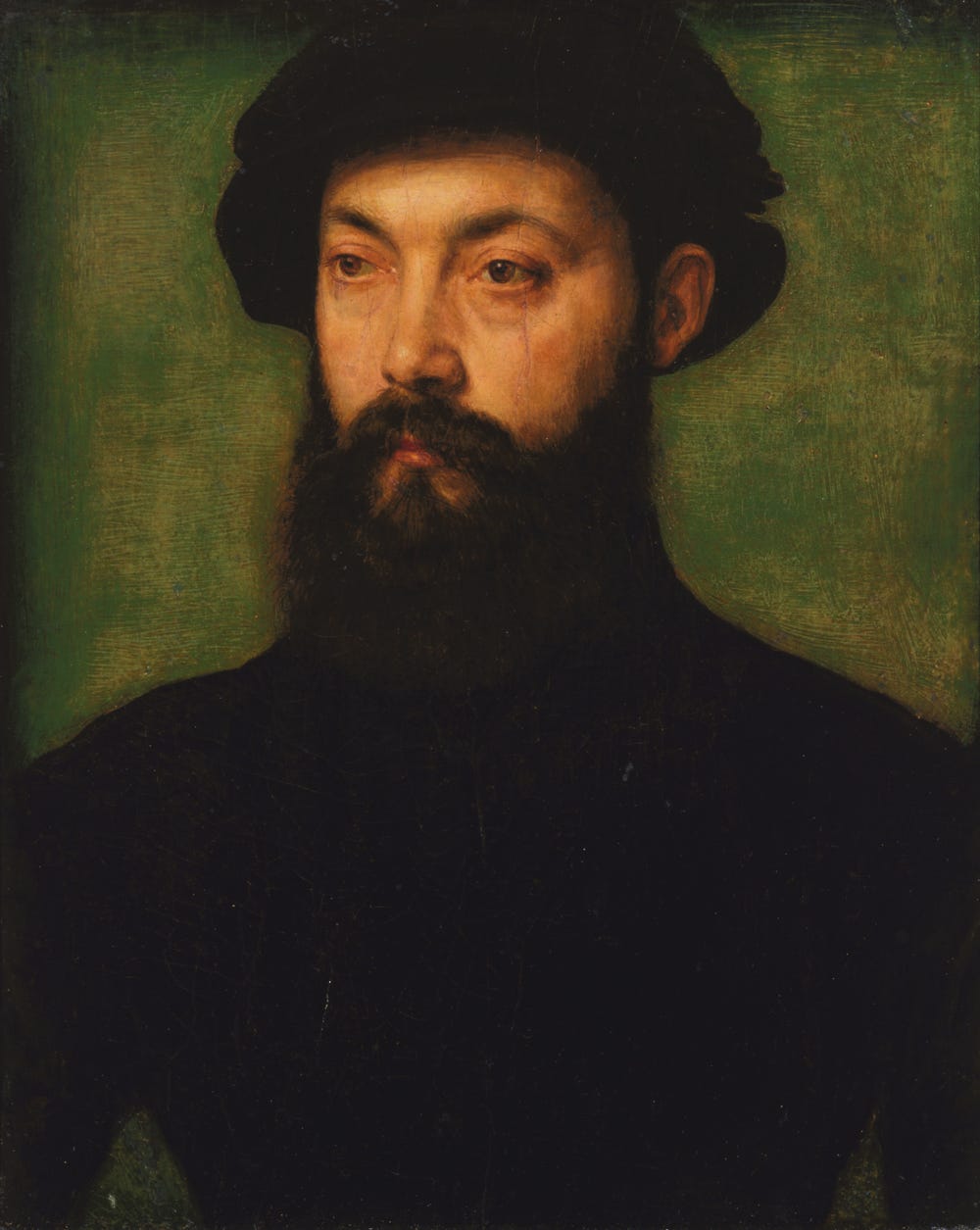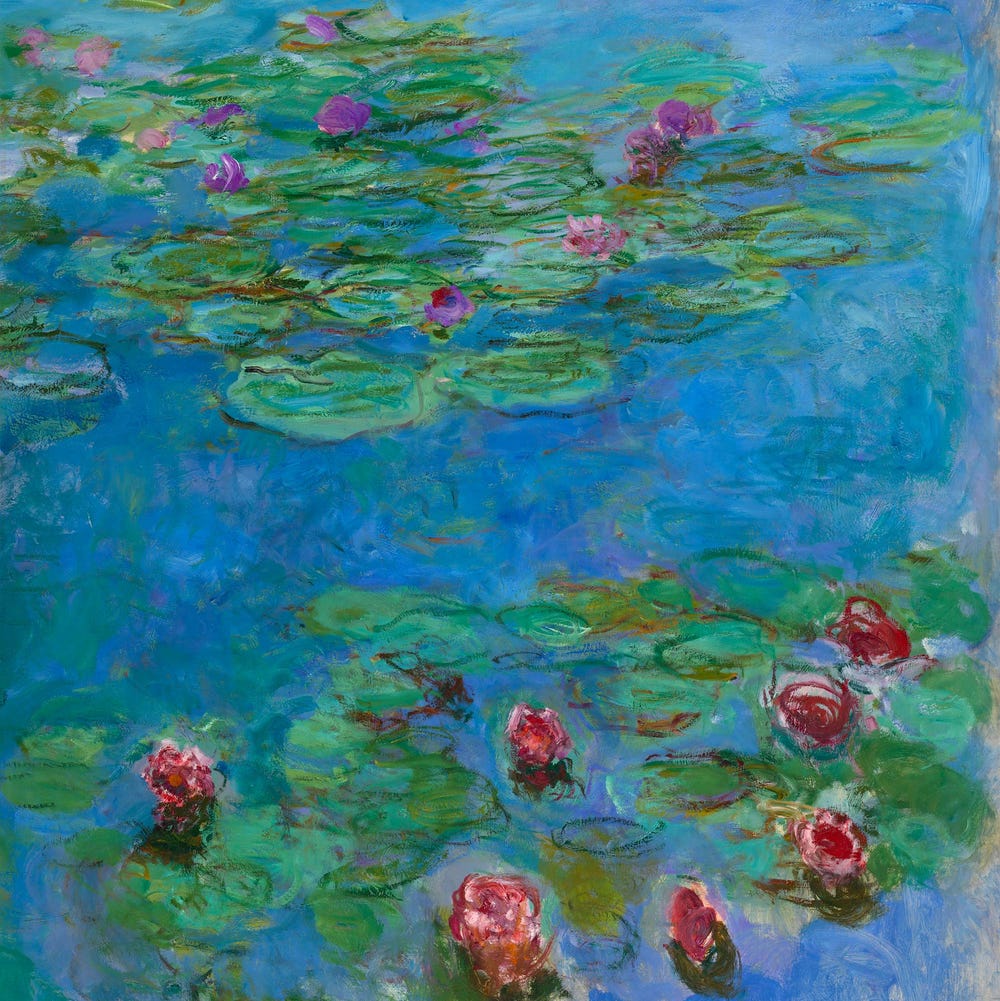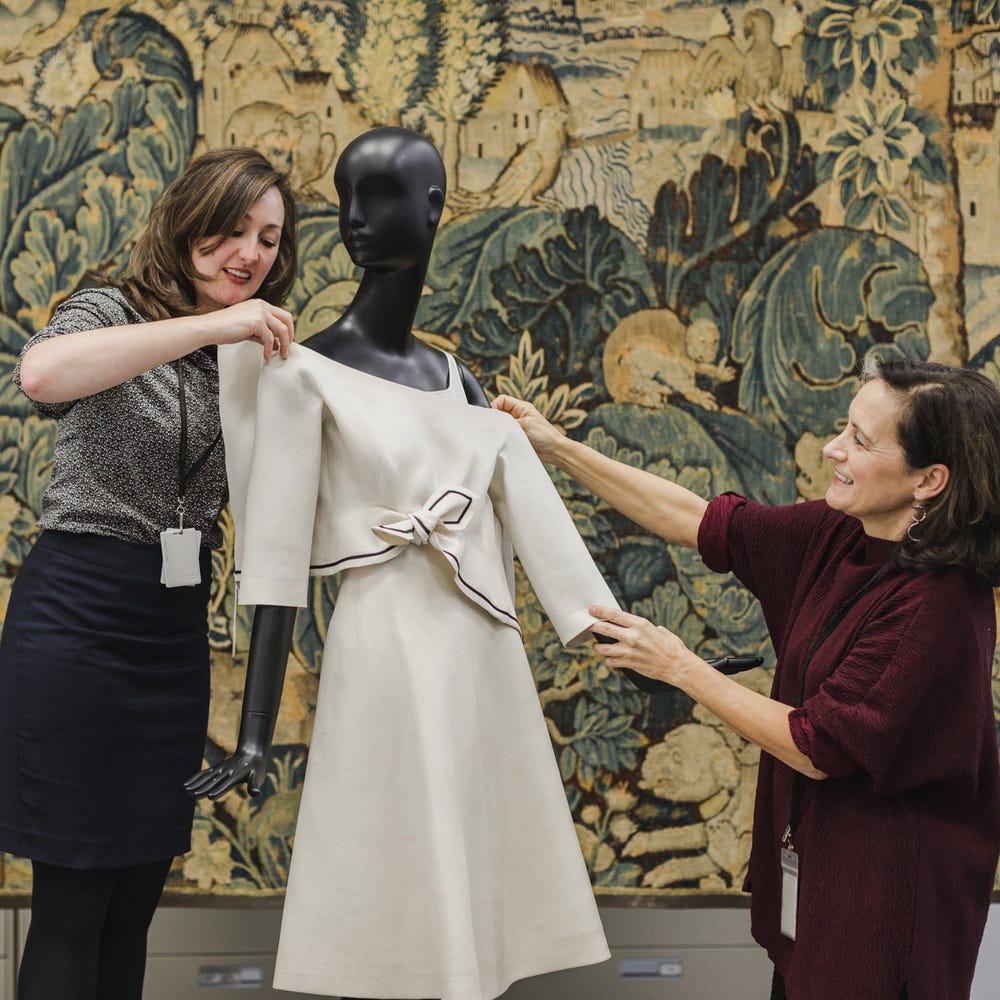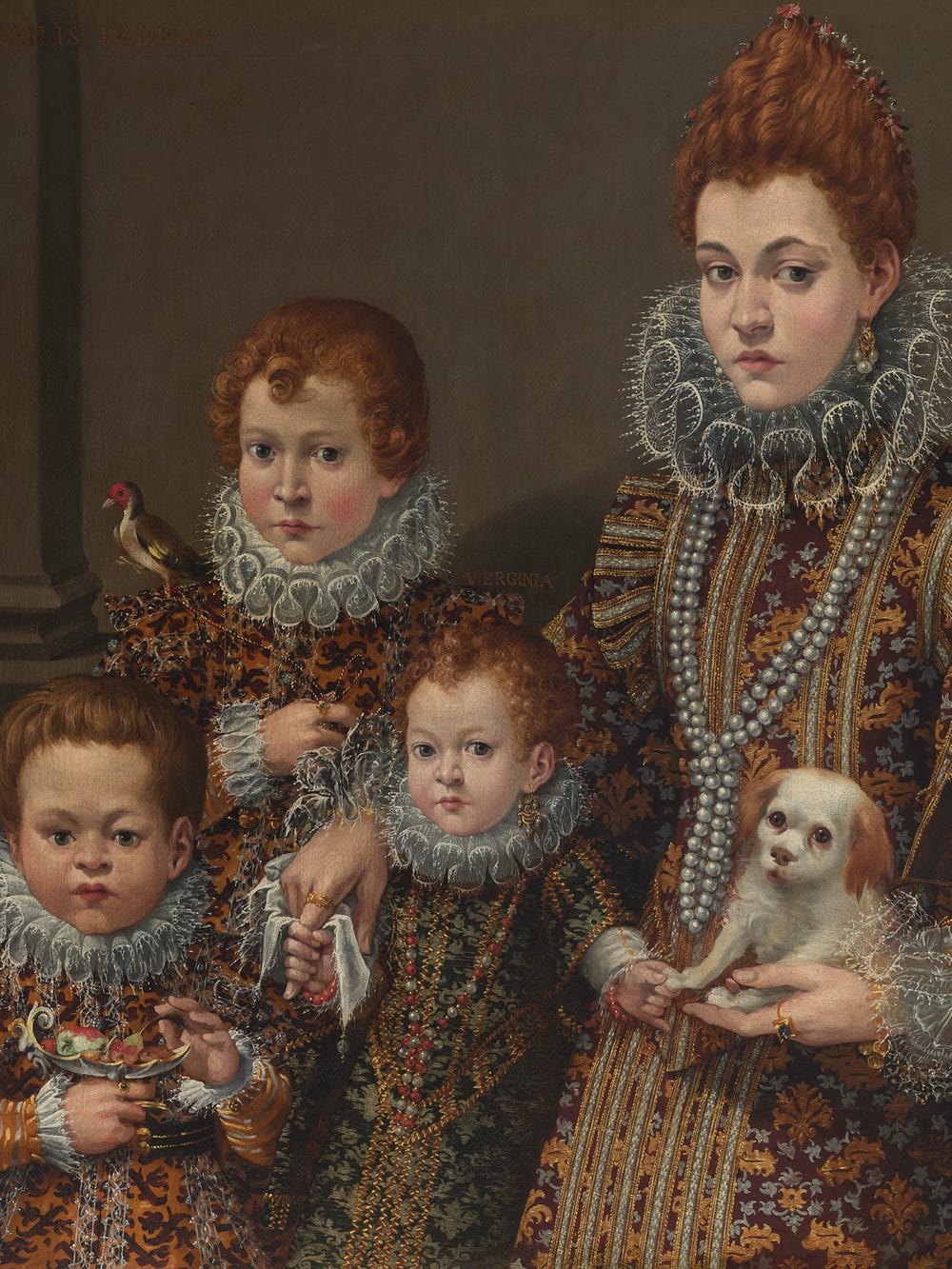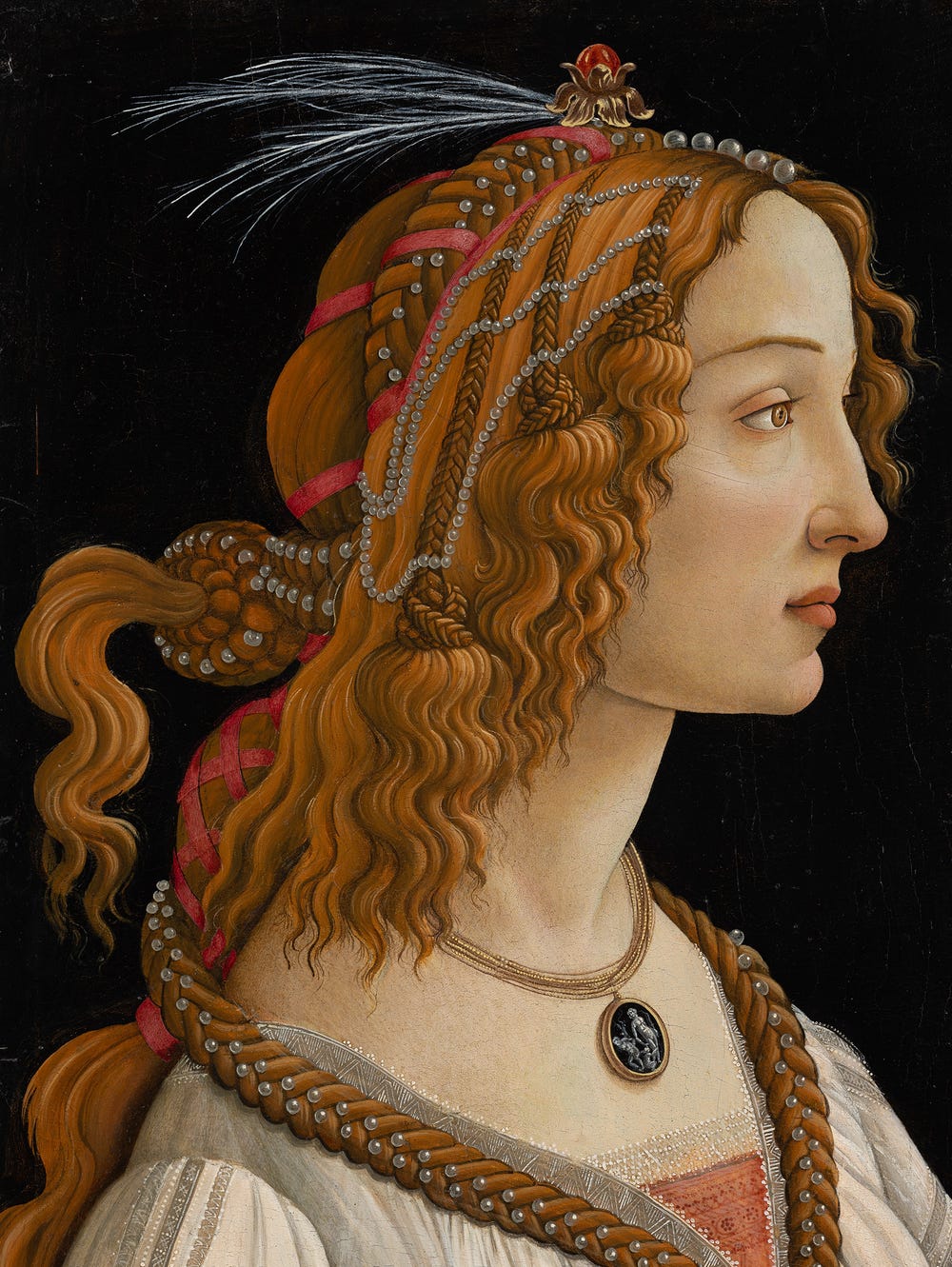A Renaissance Mystery: Investigating Corneille de Lyon’s “Portrait of a Man”
By Georgia Brabec
September 8, 2022
Corneille de Lyon, Portrait of a Man (detail), 16th century. Oil on panel, 7 x 6 in. (17.8 x 15.2 cm). Fine Arts Museums of San Francisco, Gift of the de Young Museum Society, 62.12.2.
Coming face-to-face with a work of art in a museum’s storage space is a very different experience from viewing it in the galleries. The charming atmosphere is all but lost: the ambient lighting replaced with bright overhead fluorescents, the glossy parquet floors replaced by concrete. But something about this relatively stark environment allows you to see the work of art in a new light.
As the Joseph F. McCrindle Curatorial Intern this summer, I had the opportunity to view paintings in storage as I transcribed and digitized the Legion of Honor’s catalogue of French paintings. One object in particular caught my eye: a small oil painting attributed to Corneille de Lyon, a 16th-century Dutch-born painter active in France. I was able to interact with the painting in a way I never had with another work of art — holding the 500-year-old object in my own two hands.
Corneille de Lyon, Portrait of a Man, 16th century. Oil on panel, 7 x 6 in. (17.8 x 15.2 cm). Fine Arts Museums of San Francisco, Gift of the de Young Museum Society, 62.12.2. Photograph by Georgia Brabec
Posed against an olive-green background, the man depicted in Portrait of a Man wears a black flat cap and a simple black jacket, or doublet. These austere garments allow his features to take center stage. The slight warmth of his complexion and his reserved gaze draw you in. The warm colors of the frame, made of precious tortoiseshell, complement the painting’s muted, neutral color palette. The small scale of the portrait (7 inches tall by 6 inches wide) also contributes to a sense of intimacy; you sense his presence and individuality.
I knew I had to learn more about this portrait. I was somewhat surprised to find it had a relatively sparse curatorial file; existing scholarship noted the quality and careful draftsmanship, but left many of my questions unanswered. Who does this portrait depict? Whom has it belonged to over the centuries? Is it truly the work of Corneille de Lyon?
I felt as though I had stepped into The Da Vinci Code or National Treasure; this was an opportunity to put on my detective cap, investigate the painting, and maybe even find some answers. So, like any detective, I started by compiling and reviewing the evidence.
Photograph by Georgia Brabec
We can start by addressing the obvious: a king who reigned from 1413 to 1459 could not have owned a painting by an artist who was born, at the earliest, in 1500. To take it one step further, these dates do not correspond with any single Spanish monarch, let alone a “King Ferdinando.” A more likely Ferdinando is Ferdinand I of the Two Sicilies, r. 1816 – 1825. In my attempt to connect the wax seal to him specifically, I came across the below stamp in an 1820 edition of Sicilian royal laws and decrees (the Collezione delle leggi e de’decreti reali del regno delle Due Sicilie) digitized by the Princeton University Library.
Wax seal on our artwork compared to the seal of Ferdinand I of the Two Sicilies.
The similarities between the two designs are striking, but does this mean that our Portrait of a Man was a part of Ferdinando I’s collection in the 19th century? It’s hard to say, and this seal alone is not enough evidence to confirm (nor deny) anything.
Who does this portrait depict?
I searched fruitlessly for any record of an “Odette Coligne” in hopes that she might lead me to the identity of the sitter. I had all but abandoned the search when I came across a breakthrough clue: someone had written “Odet de Coligny?” on the original accession record. Eureka!
Odet de Coligny, 1517 – 1571, was a French aristocrat, a member of the French Royal Council, and the Cardinal of Châtillon from the age of 16. At first glance, portraits of him by Corneille’s contemporaries, such as François Clouet, 1516 – 1572, bore a striking resemblance to our Portrait of a Man. The downturned eyes, the careful arch of the eyebrows, and the slight pout of the lips all seemed to suggest that the man in our portrait was Odet de Coligny. That was until I noticed the color of Coligny’s eyes, which were consistently painted a pale grayish blue — a far cry from the warm brown eyes in our painting.
But I wasn’t ready to give up yet. Further research revealed that Odet de Coligny had two brothers, François and Gaspard II. A portrait of the Coligny brothers at the Mauritshuis, however, revealed that all three of them had the same gray-blue eyes. But one possible member of the family remained: their father, Gaspard I, of whom there are no existing portraits. Could this be the only remaining portrait of Gaspard I de Coligny, Marshal of Châtillon?
As much as I would like to say yes, tying up my investigation in a concise and satisfactory manner, I cannot. I started with a list of questions and, though I answered some, many more emerged along the way. Sometimes our questions remain unanswered, and that’s OK. Mysteries like these encourage us to look carefully and engage with the past. If nothing else, my detective work may help someone else, just as the work from previous curatorial staff helped me in my search for answers.
My biggest takeaway is this: even the most unassuming work of art has the potential to tell a far more complicated and interesting story than you might think. Look closely and look carefully — you never know what you might find!
Corneille de Lyon, Portrait of a Man, 16th century. Oil on panel, 7 x 6 in. (17.8 x 15.2 cm). Fine Arts Museums of San Francisco, Gift of the de Young Museum Society, 62.12.2.
Text by Georgia Brabec, Joseph F. McCrindle Curatorial Intern, European paintings.
